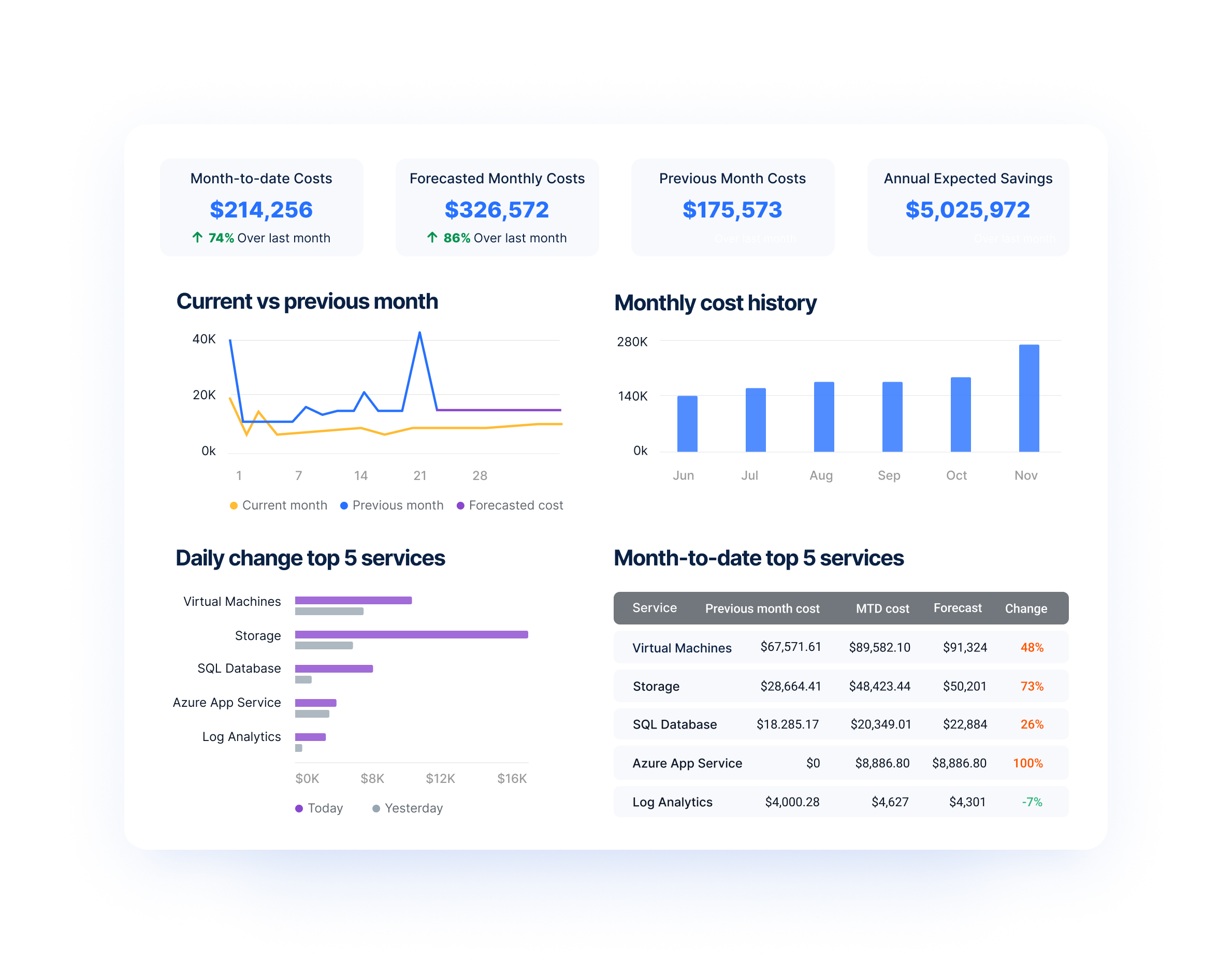Cloud tools are becoming indispensable for modern-day FinOps. They can improve efficiency and agility and deliver better client results. But what native cloud tools are right for you, and how can they benefit FinOps? Let’s find out.
When managing financial operations in your organization, using native cloud tools is a must. Let’s take a closer look at some key advantages:
Cost Optimization: Native cloud tools have the functionality that helps monitor and optimize your cloud costs. They deliver deep insights into cost usage patterns, resource allocation, and cost drivers, giving you the power to spot overspending and underutilization. Armed with this information, you can make data-driven decisions, like optimizing cloud resources, resizing instances, and using cost-effective purchasing options. In other words, more money in your pocket!
Real-Time Visibility: Cloud-native tools offer real-time visibility into cloud financials by tracking costs, usage, and performance metrics across multiple resources. Rapidly detect cost spikes before they become a problem! And leveraging third-party tools like Anodot on top of native cloud tools can bring even deeper insights into visibility.
Budgeting and Forecasting: Cloud apps make budgeting and forecasting simple. You can set spending limits and get alerts when you’re approaching them. Align costs with financial targets and plan future expenses.
Cost Allocation and Showback/Chargeback: Native cloud tools can help simplify cost allocation by allowing you to assign costs to teams, depts., projects, or cost centers. This feature is handy when multiple stakeholders want to track their respective cloud costs.
Collaboration and Accountability: Native cloud tools facilitate collaboration among finance, operations, and development teams, with better communication and collaborative decision-making regarding cost optimization strategies. Collaborating efficiently with colleagues can help avert disasters before they arise!
Exploring the Different Types of Native Cloud Tools Available to FinOps Teams
There are different types of native cloud tools that FinOps teams can use to maximize related to cost management, optimization, and financial analysis.
Let’s look at a few examples:
Resource and Instance Management Tools: Oversee and refine cloud resources like virtual machines, databases, and storage. These tools identify underutilized resources and recommend necessary actions. Examples of such devices include AWS EC2 Instance Scheduler, Azure Advisor, and Google Cloud Operations Suite.
Tagging Tools: Allocate costs to departments, teams, projects, or cost centers. By applying consistent tags to cloud resources, these tools enable you to track and monitor your cloud spend without breaking a sweat. Some examples include AWS Resource Groups and Tag Editor, Azure Cost Management and Billing API, and Google Cloud Resource Manager.
Rightsizing and Instance Optimization Tools: These tools suggest ways to tweak things to save finances by analyzing how you use the cloud. They’ll detect spikes in your FinOps that drain resources. Some examples of these lifesavers include the AWS Trusted Advisor, Azure Advisor, and Google Cloud Operations Suite.
Managing Cloud Costs Tools: Organizations can optimize their use of cloud services by aligning their financial targets with cloud spending, ensuring that costs don’t spiral out of control. This approach allows businesses to make informed decisions by tracking expenses and understanding the impact of services such as AWS Budgets, Azure Budgets, and Google Cloud Budgets.
To optimize cloud costs, native cloud tools can cater to specific functions like financial analysis and cost management. Each tool works hand-in-hand with the other Ais, APIs, or apps to make cloud management a seamless process
(BTW, We integrate with native tools from tech giants like Google, AWS, and Azure. You can read all about it in our whitepaper.)

Best Practices for Maximizing the Benefits of Native Cloud Tools for FinOps Teams
FinOps teams are crucial for handling and fine-tuning cloud expenses and resources. Using native cloud tools, FinOps teams can boost efficiency while keeping costs in check and maintaining high performance.
Here are some best practices you can utilize today:
Understand the Cloud Environment: To make informed decisions, know the features, pricing models, and services offered by your cloud provider. For instance, AWS, Azure, and GCP are some of the major cloud providers today that provide a broad range of services. A thorough understanding of these offerings enables users to select the most suitable platform for their business needs. (You can learn about it here)
Utilize Cost Management Tools: When using a cloud provider for your business, cost management needs to be a top priority. As your cloud environment scales, your expenses rise too, and unmonitored cloud usage can result in surprising bills. To keep track of your spending and ensure cost efficiency, it’s best to rely on your cloud provider’s cost management tools. (You dive deeper into these insights here!)
Leverage Cloud Provider Support and Expertise: When managing cloud costs, don’t hesitate to connect with your cloud provider’s customer support and account teams. They are the pros and can offer valuable insights and recommendations explicitly tailored to your usage patterns. Take advantage of their expertise!
And don’t forget that there are also industry experts in cloud cost management, like us! We’re always here to assist and committed to helping you optimize your cloud resources and achieve your business objectives.
Final Thoughts
Adopting native cloud tools can elevate the agility of FinOPs while ensuring they remain up-to-date with the latest industry trends. The improved service delivery with better client results is a win-win situation for all.
Discover invaluable insights into efficiently utilizing cloud-native FinOps tools with our white paper. Learn when it’s best to consider investing in third-party platforms, such as Anodot, which can help you surpass limitations inherent in native solutions.
You can also get the latest tips and trends on cloud costs by checking out our blog.
Start optimizing your cloud costs today!
Connect with one of our cloud cost management specialists to learn how Anodot can help your organization control costs, optimize resources and reduce cloud waste.





